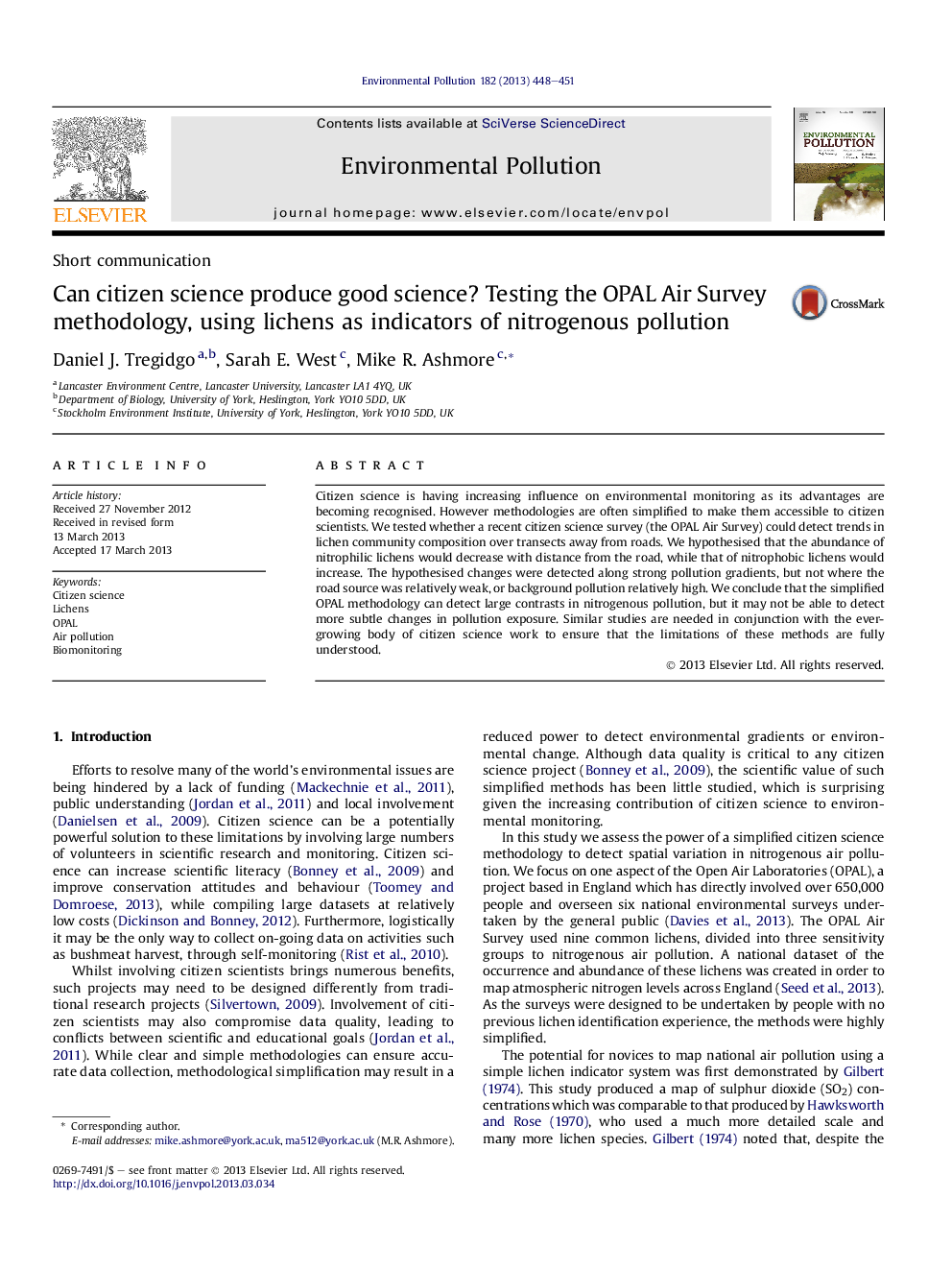| Article ID | Journal | Published Year | Pages | File Type |
|---|---|---|---|---|
| 6317143 | Environmental Pollution | 2013 | 4 Pages |
Abstract
Citizen science is having increasing influence on environmental monitoring as its advantages are becoming recognised. However methodologies are often simplified to make them accessible to citizen scientists. We tested whether a recent citizen science survey (the OPAL Air Survey) could detect trends in lichen community composition over transects away from roads. We hypothesised that the abundance of nitrophilic lichens would decrease with distance from the road, while that of nitrophobic lichens would increase. The hypothesised changes were detected along strong pollution gradients, but not where the road source was relatively weak, or background pollution relatively high. We conclude that the simplified OPAL methodology can detect large contrasts in nitrogenous pollution, but it may not be able to detect more subtle changes in pollution exposure. Similar studies are needed in conjunction with the ever-growing body of citizen science work to ensure that the limitations of these methods are fully understood.
Related Topics
Life Sciences
Environmental Science
Environmental Chemistry
Authors
Daniel J. Tregidgo, Sarah E. West, Mike R. Ashmore,
